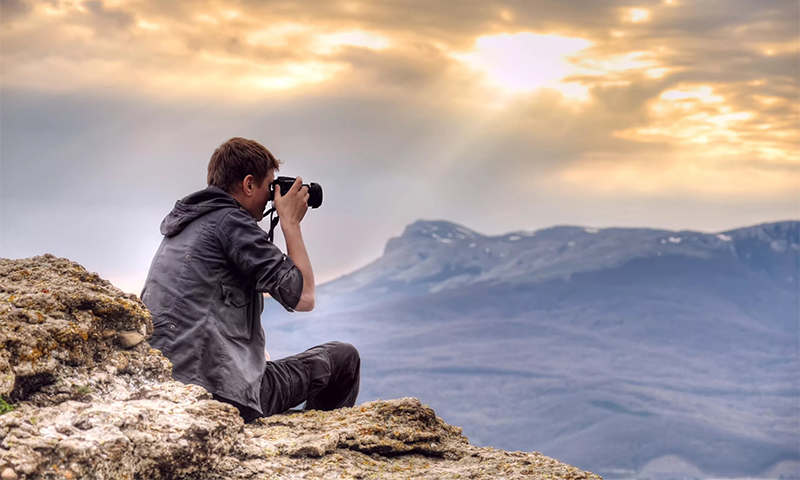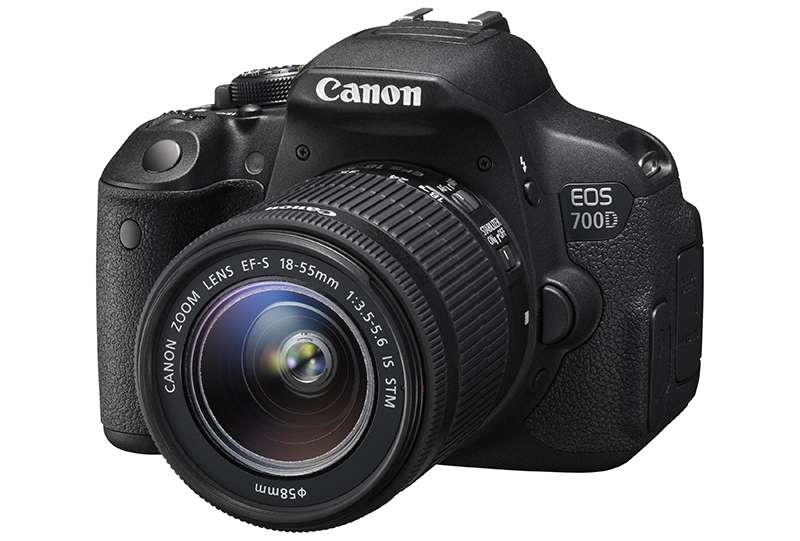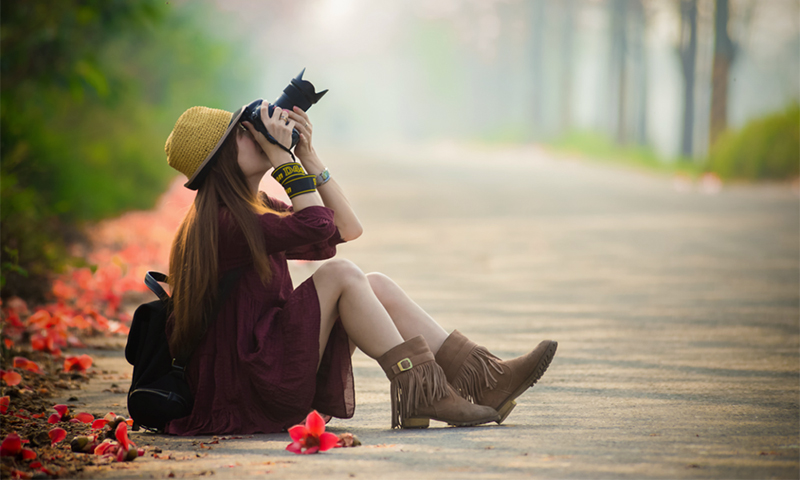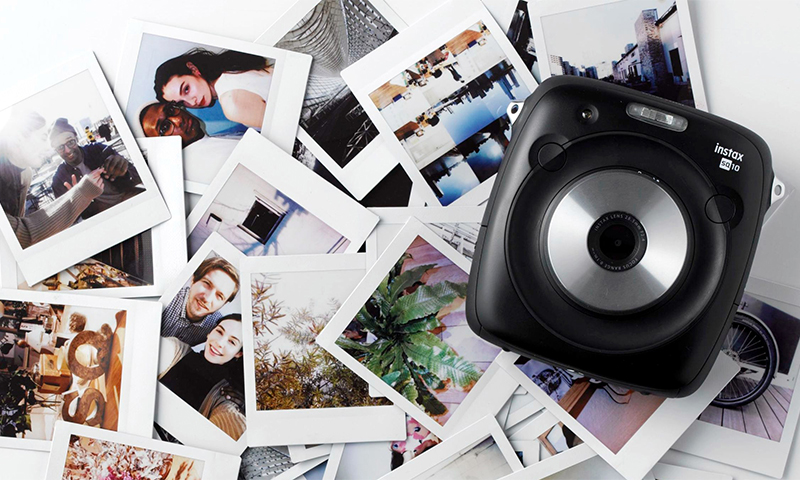Despite the fact that everyone in the phone has its own built-in camera, people are still actively buying ordinary cameras. With them, the quality of the pictures is higher, and you yourself feel like a real photo artist. What to say about those who earn a living by shooting. Manufacturers also are not asleep and continue to improve their models, offering us more and more new solutions. As a result, so many different cameras appeared on the market that it became difficult for an ordinary person to make a choice. And if you feel confused by the lenses on the shelves, our tips will help you feel more confident and make a successful purchase.

Content:
The best camera manufacturers - which company to choose
Cameras are made by many digital companies, but not all of them can boast of high quality and reliability of their products.
Units produce a cool technique that is appreciated throughout the world:
- Canon;
- Nikon;
- Sony;
- Samsung;
- Kodak.
You have the opportunity to learn more about the best cameras of these companies in our ranking. But the famous manufacturer - this is not the only criterion that you need to pay attention to when buying.
The principle of operation and the device camera

Cameras are of two types:
1. Film;
2. Digital.
In a film apparatus, the light passing through the lens falls on the chemical coating of the film, which changes color under its influence.
To catch and transmit the image, you need good optics and mechanics, which is located in the camera body:
1. Lens with lenses and aperture;
2. Film channel;
3. Distance meter and viewfinder;
4. Receiving coil for film;
5. Flash.
In a digital apparatus, the initial principle of operation is similar to film. Here, too, the light passes through the lens, but does not hit the film, but is converted into an electronic signal on a photosensitive matrix. After that, the snapshot is stored in the memory of the camera or on a flash card. The device is controlled by a built-in microprocessor.
Types of cameras
Film

These analog models have not yet completely become obsolete, although every year they are harder and harder to find on sale. But in terms of the parameters and the quality of the pictures, they can quite indulge in digital technology.
Professional film devices have a fairly wide functionality: built-in photo exposure meters, self-timer, etc. Thanks to the manual control of shutter speed and aperture, they can be focused on a single object with a slightly blurred background.
As a rule, analog models (with the exception of powerful professional cameras) are compact - their sizes do not exceed 110x70x50 mm.
Pros:
- Relatively low cost;
- Good picture quality;
- Good functionality;
- Compact size.
Minuses:
- Hard to find on sale;
- The need for film development;
- You need to carry spare coils with you if you want to take more photos.
Digital compacts

This is the well-known "soap dish" - the smallest and cheapest digital cameras from all existing.
Alas, their disadvantages seriously outweigh the existing advantages, and sometimes even the low cost can not compensate for this bias. There are only a few: megapixels, matrix sizes (from 1 to 1 / 2.3 inches), shooting modes, but for ordinary amateur photos they are still enough.
Pros:
- Compact size;
- The optimal aspect ratio of the frame is 3: 4;
- Almost infinite depth of field;
- Easy to use;
- Work from two AA batteries;
- Low cost.
Minuses:
- The quality of photos is equally low;
- Weak flash;
- Poor functionality;
- Unable to shoot objects in motion.
These models can be misleading to an inexperienced buyer, as they look quite presentable: large, heavy, with an impressive lens that allows you to zoom in objects 20-60 times. But the matrix here is still small, and the optics are made of ordinary glass, so that we are dealing with the same soap box, only unreasonably expensive.
Mirror

These are powerful, functional and very expensive devices. The ideal combination of a large matrix from medium to full format and high resolution up to 38 megapixels allow them to make the highest quality images. Such cameras have a rich set of additional functions and supported shooting modes, as well as very fast autofocus, which is triggered in a fraction of seconds.
Professional analog devices, in which the mirror sent the image to the viewfinder window and previously protected the film from exposure to light, were mirrored earlier. When the shutter was released, it rose, passing a light beam. This technology has taken root in digital models, only now the mirror covers the sensitive matrix from the light.
Pros:
- Operatively "respond" to the actions of the photographer;
- The presence of the viewfinder;
- Fast autofocus and the ability to photograph objects in motion;
- Top quality images;
- The presence of almost all possible additional functions;
- A wide selection of interchangeable optics;
- Excellent ergonomics;
- Economical battery consumption - charge up to 1000 shots.
Minuses:
- Heavy and bulky.
Mirrorless (Evil-cameras)

Such models have quite impressive characteristics and are also capable of making high quality photographs. However, due to the lack of a mirror, they are deprived of the optical viewfinder.
The stuffing in Evil-cameras is in no way inferior to DSLRs, and they themselves have more compact dimensions. The functionality is also decent: timer, white balance, image stabilizer, the ability to change optics, etc. Very often in such models you can see a 5-inch touch screen.
Pros:
- High quality images due to the large format of the installed matrices;
- Excellent functionality;
- Compact and not particularly heavy;
- Big screen;
- An opportunity to use the most different optics which "does not sit down" on a reflex camera.
Minuses:
- Lack of optical viewfinder;
- Increased battery consumption.
Range finder

These models are very expensive, however, and the quality of the photos at their height. They are smaller in size than SLR cameras, but they are quite weighty, since they have a lot of brass parts.
They also differ in their quiet work, because there are no mechanisms like the mirror lift and the diaphragm repeater. These cameras are called distance meters because of their large focal length (up to 135 mm), which is much higher than the DSLRs.
Pros:
- Work quieter than mirror devices;
- The minimum shutter lag, which is important when shooting “high-speed” frames;
- The viewfinder does not cease to show the picture at the time of shooting - you can immediately alter the frame, if something did not work;
- Have compact sizes;
- Compatible with virtually any interchangeable lens.
Minuses:
- Great weight;
- Expensive.
Medium format

Cameras for real pros and pavilion surveys are equipped with a medium format matrix. Despite its name, it turns out to be physically longer than full frame. Moreover, due to the resolution exceeding 40 Mp, such a matrix gives the highest quality of images that modern technology is capable of.
Pros:
- High resolution and perfect detail images;
- Decent zoom;
- Abundance of optical effects;
- Always equipped with very high quality lenses.
Minuses:
- Extreme cost;
- Designed exclusively for professional shooting;
- Heavy, bulky and not very nimble.
Camera selection options

Matrix
The camera matrix is an optical image to digital signal converter. The quality of future photos completely depends on its characteristics.
Photographic manufacturers offer several types of matrices:
1. CCD or CCD - expensive, “voracious” in terms of energy consumption, but give a picture of perfect quality.
2. CMOS-matrix (CMOS) - less sensitive and pass more noise, but they are fast and more affordable cost. And with their help, you can take serial pictures and even record video. 90% of amateur cameras are equipped with CMOS.
3. Live-MOS arrays - according to their characteristics, are something between a CCD and a CMOS, but are used only in Panasonic, Leica and Olympus cameras.
Megapixels and inches
Many people believe that the more megapixels in a camera, the higher the quality of images. In terms of detailing frames in large format printing, this is true, but the picture itself may be far from ideal.
Megapixels are the number of light-sensitive points on the matrix, that is, its resolution. But these same points can be large and give a bright image, or small ones that lose light because of their reduced area. So, looking for indicators Mp, remember that this is just a detail - one of several factors affecting the quality of images.
1. For home use you have enough cameras up to 10 megapixels;
2. For shooting with the subsequent poster print will need about 20;
3. Professionals use devices with a resolution of more than 20 megapixels.
Dimensions of the matrix manufacturers of cameras rarely indicate in the characteristics, preferring to hide behind the impressive megapixels. But at equal resolution, a wider matrix will give a picture brighter and clearer, so you should not discount this parameter.
You may meet these figures:
1. From 4.8x3.6 to 12.8x9.6 mm (or from 1/3 to 1 ″) are very small matrices that are installed in inexpensive cameras. They are "big" pixels will only harm.
2. From 18.3x13 to 23.7x15.6 mm (4/3 ″ or APS-C designations are possible) - expensive professional cameras are equipped with such matrices.
3. 36x24 mm - full-frame matrix with a crop factor of 1, are considered as reference.
4. 60x45 mm are the same medium format matrixes that are “better than the best.”
Sensitivity
ISO is a measure of the sensitivity of the camera's matrix. He is responsible for improving the quality of shooting in the dark. In principle, you can use a smaller ISO (about 50-100), if you can increase the shutter speed, for example, when working with a tripod. But when photographing "with hands" there is a risk of getting a blurry frame, so here it is better to use ISO from 400-800 units and higher.
On all digital devices, the sensitivity is adjusted - either automatically or manually set. The only question is to what extent. On compacts, even a high ISO does not matter, because a small matrix is unable to catch enough light without “making noise”. But on large-format devices, the ability to increase the photosensitivity to 3200-51200 will be just the way for smart night shots.
Lens aperture
Of course, on most cameras, the lens can be changed, but more often it will have to be used by relatives. Here it is important to remember that the higher the f index, the more light will pass through the lenses and fall on the matrix. The best is considered f / 1,2, on the weakest optics the designation f / 16 is put.
Zoom
The ability of a photographic lens to zoom in on distant objects. It can be optical or digital. In the first case, the magnification of the picture provides the displacement of the lenses, due to which the focal length changes, and the frame approaches 8-25 times without loss of quality.
Digital zoom enlarges the image up to 50-100 times at the program level - by capturing the central part of the image and stretching it to full screen, losing clarity along the way.Simply put, optics are needed for higher-quality “grumpy” photos, while digital zoom is generally useless - the same trick with zoom can be turned on a computer when processing photos.
Image stabilizer
One of the most useful features in the camera, avoiding blurry pictures due to hand shake and other vibrations:
1. Optical stabilizers are considered the best - thanks to them, the lenses “float” in the lens, but remain motionless relative to the subject.
2. Digital - here, the built-in processor monitors every shift, which at the time of adjustment can lose some information on the matrix perimeter. And when you turn on the zoom, the quality of the images often suffers.
Memory type
If you use a digital device rather than film, your pictures will be recorded on one of the following types of media:
1. A hard disk is the “native” memory of a camera (as a rule, non-removable), characterized by a very large capacity. Ideal for models that additionally provide video mode.
2. Built-in flash-memory is more expensive than hard, but it works faster and is considered more reliable.
3. Removable memory cards are popular, convenient to use, but unreliable and often fail without apparent reason. They are relatively inexpensive, but it is better to always have a small supply and not keep pictures on them for a long time.
Availability of additional functions
Additional functions of the camera include:
1. The possibility of video;
2. Red eye removal;
3. Flash;
4. Manual and auto focus;
5. Depth of field adjuster;
6. Timer.
The more various options will be in your device, the easier it will be shooting in different conditions.
Which camera to choose

1. If you need a camera for ordinary family photos, a “soap box” or some zoom compact is the best possible way. The quality of the pictures here is not perfect, but for daytime photo sessions it is quite decent. Choose a model with a resolution of up to 8 megapixels and a CMOS-type matrix. The main thing is to find a lens with a maximum luminosity value, since in compacts it usually goes non-removable.
2. Do you want to take good amateur photos in nature or on vacation? Take mirrorless cameras with full-frame or 4/3 CMOS matrix and a resolution of about 15-20 Mp.
3. If you are planning to earn a living by taking pictures or are seriously passionate about this kind of art, choose a professional DSLR camera with a large CCD or MOS matrix. For a detailed picture of 20 megapixels you have enough with his head. The main thing is that the camera has a strong lens not lower than f / 5.6 and an optical image stabilizer.
All other types of cameras will be of interest only to individuals:
1. Long-length cameras are rather status cameras that can be boasted in the circle of connoisseurs.
2. Medformats are bought only by professionals working in the field of advertising.
3. Film analogs are already for connoisseurs of the classics and true collectors.
How much is the camera

1. A simple "soap box" can be bought at prices ranging from 2,000 to 6,000 rubles. Zoom compacts are sold from 8 to 425 thousand.
2. Mirrorless will cost you at least 13 thousand rubles, the ceiling for these models is at the level of one million.
3. Mirrored digital cameras are even more expensive: although you can find a simple device for 10 thousand, professional equipment easily reaches 2 million rubles. and higher.
4. Approximately the same are the status rangefinders and medium-format devices, only the input price they will be 20 and 400 thousand rubles, respectively.
5. Film cameras have the biggest run-up: among them are both copies for 300 rubles and premium models with a cost of up to 1.2 million.
It will be interesting to friends too










